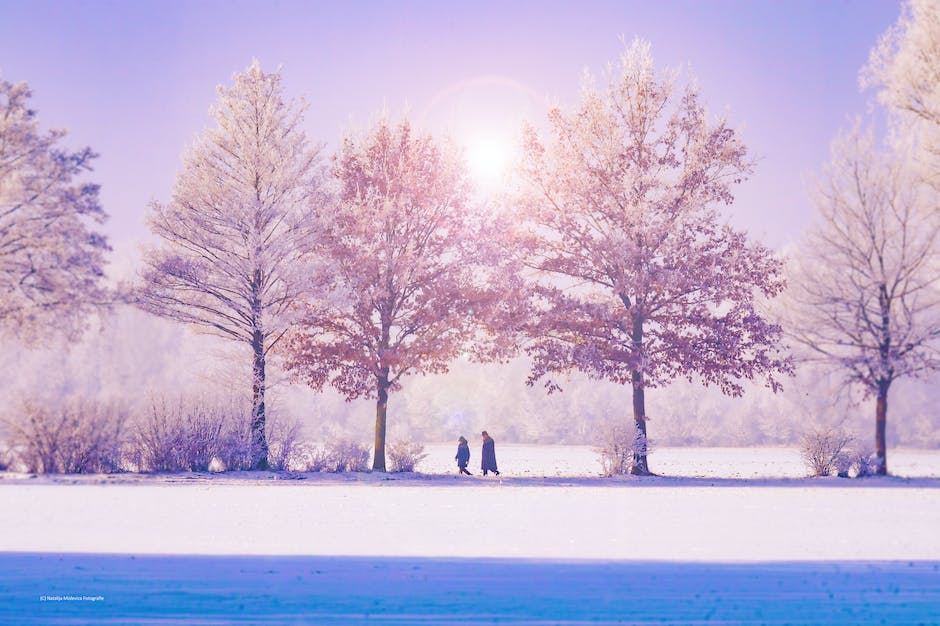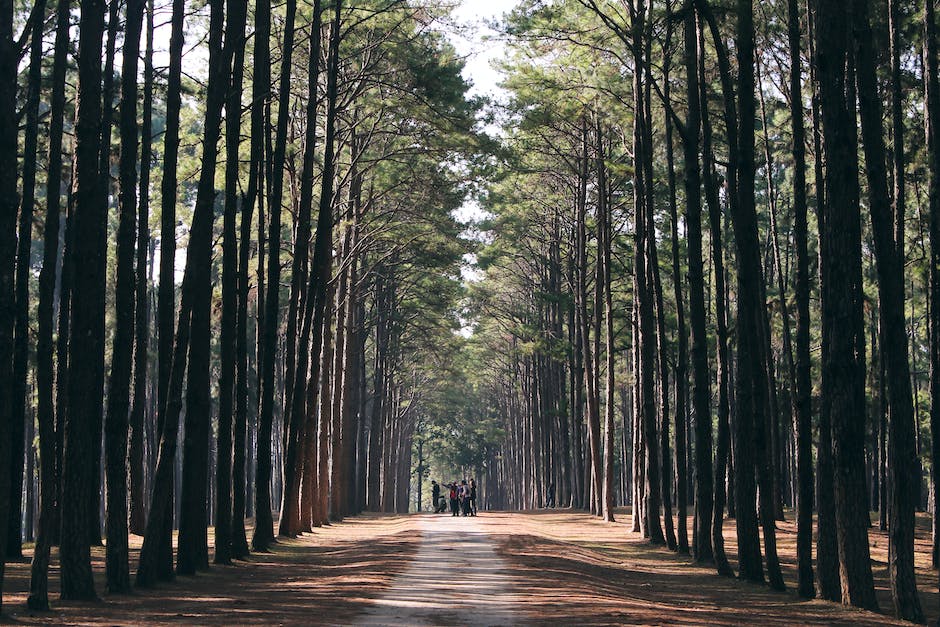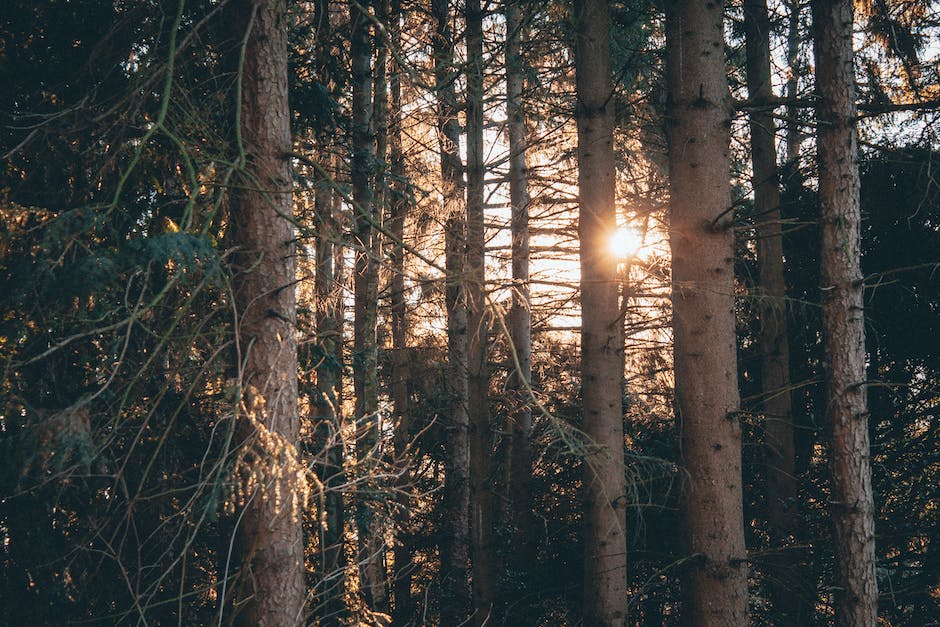The answer to this question is a bit complicated. Pine trees do need sunlight, but they can also survive in shady conditions. In fact, there are some species of pine tree that prefer shady conditions. So, it really depends on the type of pine tree you are talking about.
Yes, pine trees need sunlight. They are able to grow in shady areas, but they need sunlight to produce food for themselves.
Can pine trees grow in the shade?
In general, fir trees (genus Abies), yews (Taxus), hemlocks (Tsuga), and arborvitae (Thuja) are all relatively shade tolerant. Most cedars (Cedrus), spruce trees (Picea), pines (Pinus), and junipers (Juniperus), however, are not.
This tree prefers full sun and partial shade, meaning it prefers a minimum of four hours of direct, unfiltered sunlight each day.
Why do pine trees need sunlight
Trees use energy from the sun to create sugars through a process called photosynthesis. Without these sugars as an energy source, a tree cannot grow or ultimately survive. A study by Thomas Givnish found that the process of photosynthesis is directly impacted by the amount of sunlight that hits a tree’s leaves.
These five conifers are all popular choices for landscaping in North America. All of them are relatively easy to care for and can thrive in a variety of conditions.
What trees don’t need sunlight?
There are a variety of trees that can thrive in shady areas – below are 11 of the best options.
American beech, American hornbeam, Big leaf maple, American hop hornbeam, Common hoptree, Japanese maple, Pagoda dogwood, Pawpaw (Northern species) are all great choices for shady areas.
Pine trees are one of the most hardy tree species out there. They can survive in a variety of environments, but they prefer a mountainous region with fairly steady rainfall and favorable soils. Pine trees shed their older needles in the fall season but maintain some foliage year-round. Some pine species require fire to maintain a steady population growth.
Do pine trees need a lot of water?
Pine trees are generally quite drought-tolerant and don’t need a lot of water to survive. However, in some climates they can benefit from supplemental watering during dry winters or during periods of extended drought. Mature pine trees will generally need more water than young trees.
A tree in full shade may have a difficult time surviving as the amount of sunlight it receives will inhibit the photosynthetic process. Some trees are tolerant of shade, but many will only grow stunted without the proper amount of sun.
What helps pine trees thrive
Pine trees are lovely additions to any landscape and with a little care, can thrive for many years. Here are a few tips to keep your pine tree healthy and looking its best:
-Plant in fertile, well-drained soil in an area that receives full sun.
-Give the tree plenty of room to grow to its full size.
-Make sure the soil is not compacted and that roots have plenty of room to grow and establish themselves.
-Water regularly, especially during drier months.
-Fertilize yearly with a balanced fertilizer.
-Prune as needed to shape and remove any dead or damaged branches.
Many conifers are subject to needle drying, or winter burn, during the winter months. The most common symptom of winter burn is brown or red foliage on the exposed (often south) side of the tree. This is caused by the tree’s needles losing moisture faster than they can take it in from the ground. To prevent winter burn, make sure to water your conifers regularly during the fall and winter months.
How do you keep pine trees healthy?
Pine trees are known for their large lateral branches and shallow root systems. While these features can be beneficial in some ways, they can also make pine trees more susceptible to stress, insects and diseases. Using a pine tree fertilizer can help keep trees healthy and better able to tolerate these problems.
There are a few things that can cause browning in pine trees- one of the most common is an inability to uptake enough water to keep the needles alive. When moisture is overabundant and drainage is poor, root rot often develops and causes the roots to die. This can lead to the pine tree dying from the inside out.
Can evergreens survive in shade
Did you know that you can grow evergreen trees and shrubs in shade? That’s right – evergreens make excellent neighbors for year-round good looks that complement almost everything. Try shade-tolerant evergreens like Emerald Spreader Japanese yew for a beautiful addition to your landscape.
Pine trees are some of the hardest trees to grow. They need a lot of sunlight and well-drained soil to prosper. However, if you provide these trees with the right conditions, they will grow quickly and be very healthy.
What is the easiest pine tree to grow?
With its rapid growth rate and oval shape, the Loblolly Pine is an excellent choice for gardeners and landscapers who are looking for a quick way to achieve privacy. This Pine Tree’s slender, dark-green needles and red-brown cones also make it a beautiful addition to any landscape.
There are a variety of plants that can prosper in locations that do not have direct sunlight. Some of the best options include bromeliad, Chinese evergreen, cast iron plant, Dracaena, Dumb cane, English Ivy, Maidenhair fern, and parlor palm. Each of these plants have different requirements in terms of watering and care, so be sure to do some research on the specific plant you are interested in.
What outdoor plant needs no sunlight
Snake Plant (Sansevieria trifasciata): This plant is known for its ability to thrive in low-light conditions and its resistance to drought. It is also known for its striking appearance, with long, slender leaves that are often variegated with green and white stripes.
ZZ Plant (Zamioculcas): This plant is known for its ability to tolerate low light and neglect. It is also known for its distinctive, bulbous shape and its glossy, deep green leaves.
Peacock Plant (Maranta leuconeura): This plant is known for its beautiful, marbled foliage which is often variegated with shades of green, pink, and white. It is also known for its tolerance of low light conditions.
Wax Begonia (Begonia x semperflorens-cultorem): This plant is known for its ability to tolerate shade and its prolific blooming. The leaves are oftenBegonia Semperflorens-CultoremGreen and whitevariegated, and the flowers are typically white or pale pink.
Nerve Plant (Fittonia spp): This plant is known for its distinctive, veined leaves which are often variegated with
Pine trees are relatively low maintenance compared to other trees – they don’t require much pruning. The only time you really need to prune a pine tree is if there is a broken limb or some sort of other damage that needs to be corrected.
Are pine trees hard to maintain
The best thing about trees is that they don’t require much care once they are established. Just make sure to plant them in a location that gets plenty of sunlight and has moist, rich soil that drains well. If you’re not sure about the drainage, dig a hole about a foot deep and fill it with water. If the hole doesn’t drain within a few hours, the tree won’t do well in that spot.
Pines are long lived and typically reach ages of 100–1,000 years, some even more. The longest-lived is the Great Basin bristlecone pine (P longaeva). One individual of this species, dubbed “Methuselah”, is one of the world’s oldest living organisms at around 4,800 years old.
Is coffee grounds good for pine trees
Organic matter, such as coffee grounds, is a good way to increase the acidity of your soil. However, it is not the best way to provide your evergreens with the nitrogen, phosphorus, and potassium they need. If you rely solely on organic matter to provide these nutrients, your evergreens will not receive the adequate amounts they need to thrive.
Overwatering trees can lead to a number of problems including wilting, leaf drop, and root rot. If you notice any of these signs, it’s important to cut back on watering and allow the tree to dry out. With proper care, most trees will recover from overwatering and continue to thrive.
Should pine trees be watered in the fall
As we all know, trees are living things and need water to survive. While it’s important to water your pine trees year-round, it’s especially crucial to do so during the winter months or when it’s hot and windy during the summer. Doing so will help maintain the health of your pine trees and keep them looking their best.
Plants need sunlight to produce food for themselves, but too much sunlight can be harmful. Too much sunlight can cause leaves to burn, so a rest period in darkness is important for some plants. Most trees shed their leaves in winter for about 3 months, which is a good period of time for them to have a rest from the sun.
Final Words
Pine trees do need sunlight in order to grow properly. Without enough sun, the tree will not be able to produce the food it needs to survive. Additionally, pine trees need sunlight to help them produce the resin that is necessary for their survival.
It is a common misconception that pine trees need sunlight in order to prosper. However, pine trees actually prefer shadier, cooler conditions. While they will grow in sunny areas, they will not be as healthy or thrive as much as they would in a more forested setting.
Mark Hoffman is a dedicated arborist and tree care specialist with over a decade of experience. His love for trees began when he visited Yosemite National Park as a teenager and was awestruck by the giant sequoias. Mark pursued his passion by studying forestry at Michigan Technological University, where he earned a Bachelor of Science degree.
Since then, he has worked tirelessly in the field of arboriculture, helping to preserve and protect trees in his community. His expertise and dedication have made him a respected leader in the industry and a valuable resource for anyone seeking advice on tree care.
